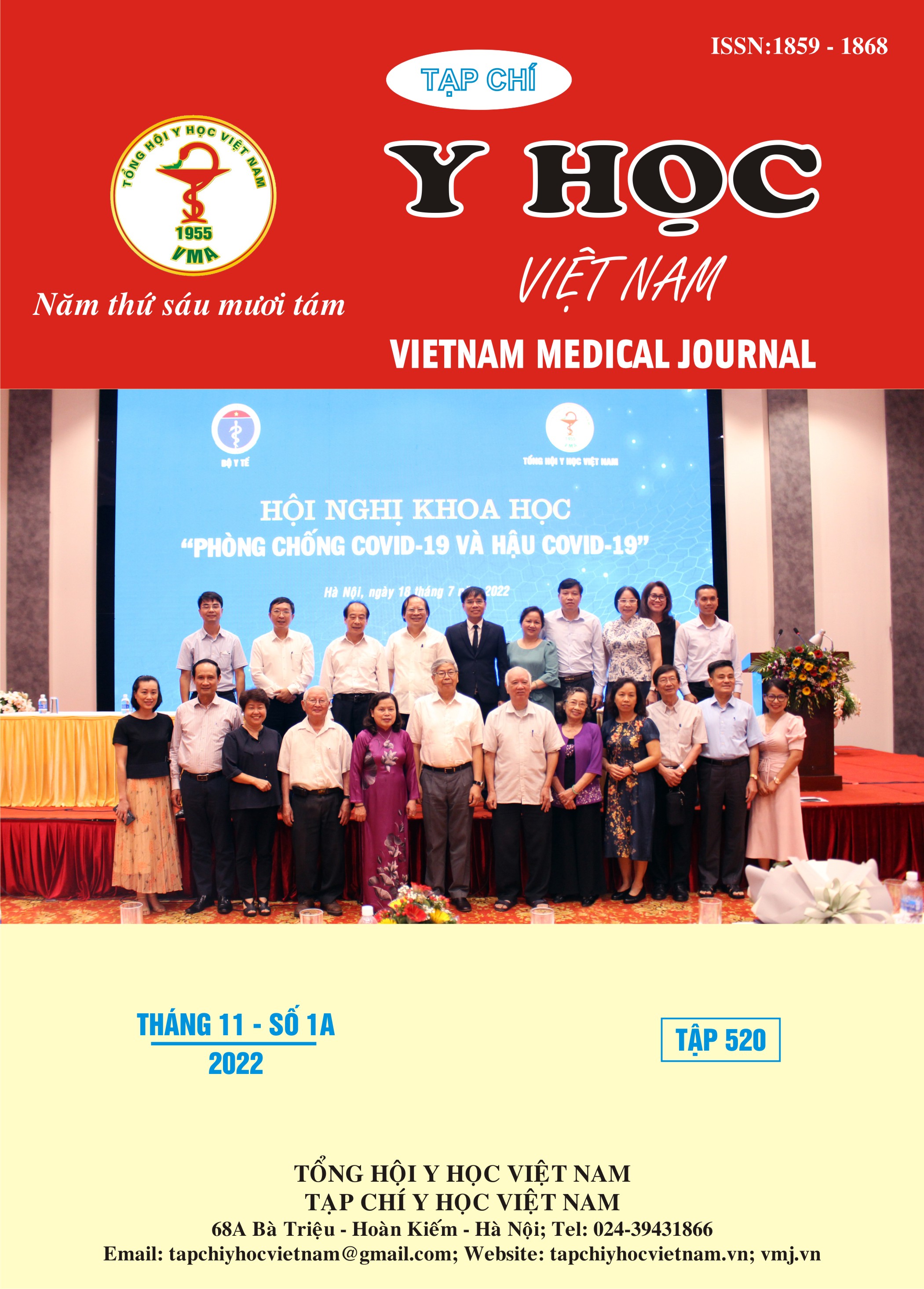THE CLINCAL SYMPTOMS, NEURIOLOGICAL IMAGES AND SOME RISK FACTORS OF PONTINE HEMORRHAGE
Main Article Content
Abstract
Pontine hemorrhage is uncommon, clinical symptoms are varied, and neuroimaging is relatively typical. The disease has a high mortality rate, but there is no specific treatment method, mainly to ensure survival and control the risk factors that play an important role. Objective: To describe the clinical and neuroimaging characteristics of pontine hemorrhage. Analysis of some risk factors of patients with pontine hemorrhage. Subjects and methods: A cross-sectional description of 48 patients diagnosed with pontine hemorrhage at Neurology Center - Bach Mai Hospital from July 2021 to September 2022. Results: In 48 patients included in the study, there were 40 male patients and 8 female patients, the mean age was 56 ± 13 years old, mainly the age group 50-59 years old (35.4%). Symptoms of sudden onset (83.3%), often occurring at work (41.7%), common headaches (87.5%), motor paralysis, facial disproportion (72.9%) and confusion consciousness (62.5%). Patients admitted to the hospital had a high rate of mild disturbance of consciousness Glasgow score 14-15 (62.5%), hypertension in stage 2 (45.8%), 9 patients (18.8%) had hypothermia. Common focal neurological symptoms include: hemiplegia (87.5%), central VII paralysis (41.7%). Some typical syndromes of the pontine: Milard-Gubler syndrome (27.1%), Foville syndrome (22.9%), Raymond-Cestan syndrome (16.7%). Typical imaging features on CT scan of the brain are homogenous increase in density (84.8%), with surrounding cerebral edema, the volume is usually over 3mL (41.7%). High blood pressure and diabetes are the two most common risk factors. Conclusion: It is more common in men than in women, usually at the age of 50-59. Sudden onset at work, diverse clinical symptoms: mild disturbance of consciousness, headache, hemiplegia, facial paralysis, pontine syndromes. On CT, there is a homogenous increase in density with surrounding cerebral edema. High blood pressure and diabetes are the two main risk factors.
Article Details
Keywords
cerebral hemorrhage, pontine, brain stem syndrome, risk factors
References
2. Đinh Ngọc Tuấn (2015), Nghiên cứu trong áp dụng phân loại Chung và Park trong tiên lượng chảy máu cầu não, Luận văn Thạc sỹ Y học, Đại học Y Hà Nội.
3. Vũ Thị Trà (2015), Nghiên cứu đặc điểm lâm sàng, hình ảnh học và một số yếu tố nguy cơ của chảy máu não vùng hố sau, Luận văn Thạc sỹ Y học, Đại học Y Hà Nội.
4. Nguyễn Tiến Nam (2007), Nghiên cứu đặc điểm lâm sàng, hình ảnh học và một số yếu tố tiên lượng của cháy máu cầu não, Luận văn Thạc sỹ Y học, Đại học Y Hà Nội.
5. Đặng Viết Thu (2011), Nghiên cứu một số yếu tố nguy cơ ở bệnh nhân tai biến mạch máu não từ 60 tuổi trở lên tại bệnh viện Lão khoa Trung ương, Luận văn Thạc sỹ Y học, Đại học Y Hà Nội
6. Hoàng Khánh (2009), Tai biến mạch máu não – Từ yếu tố nguy cơ đến dự phòng, NXB đại học Huế.


